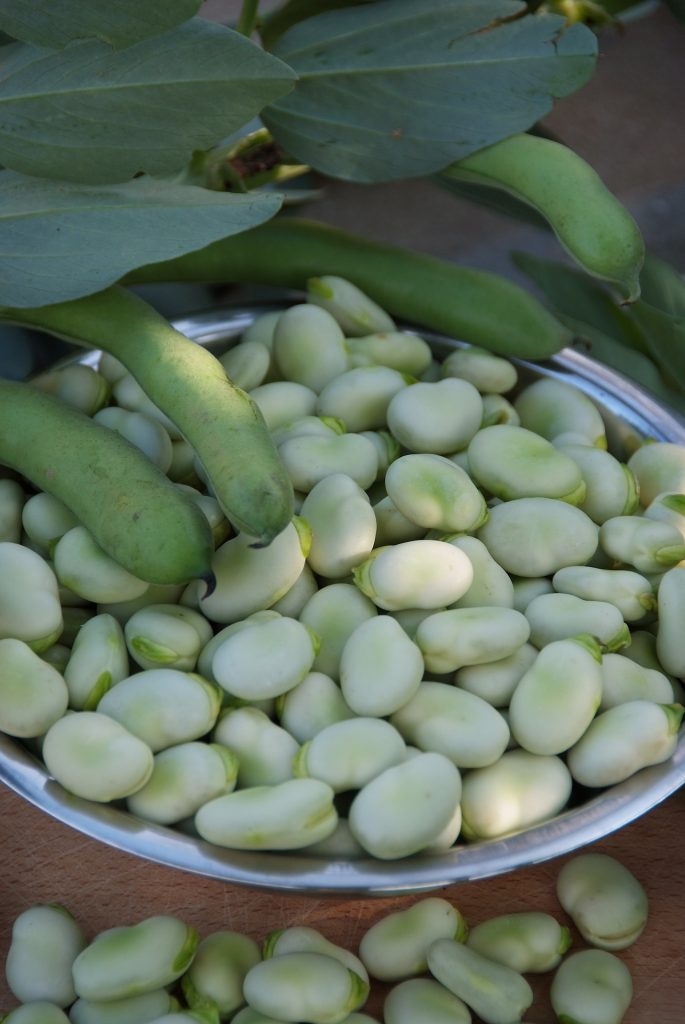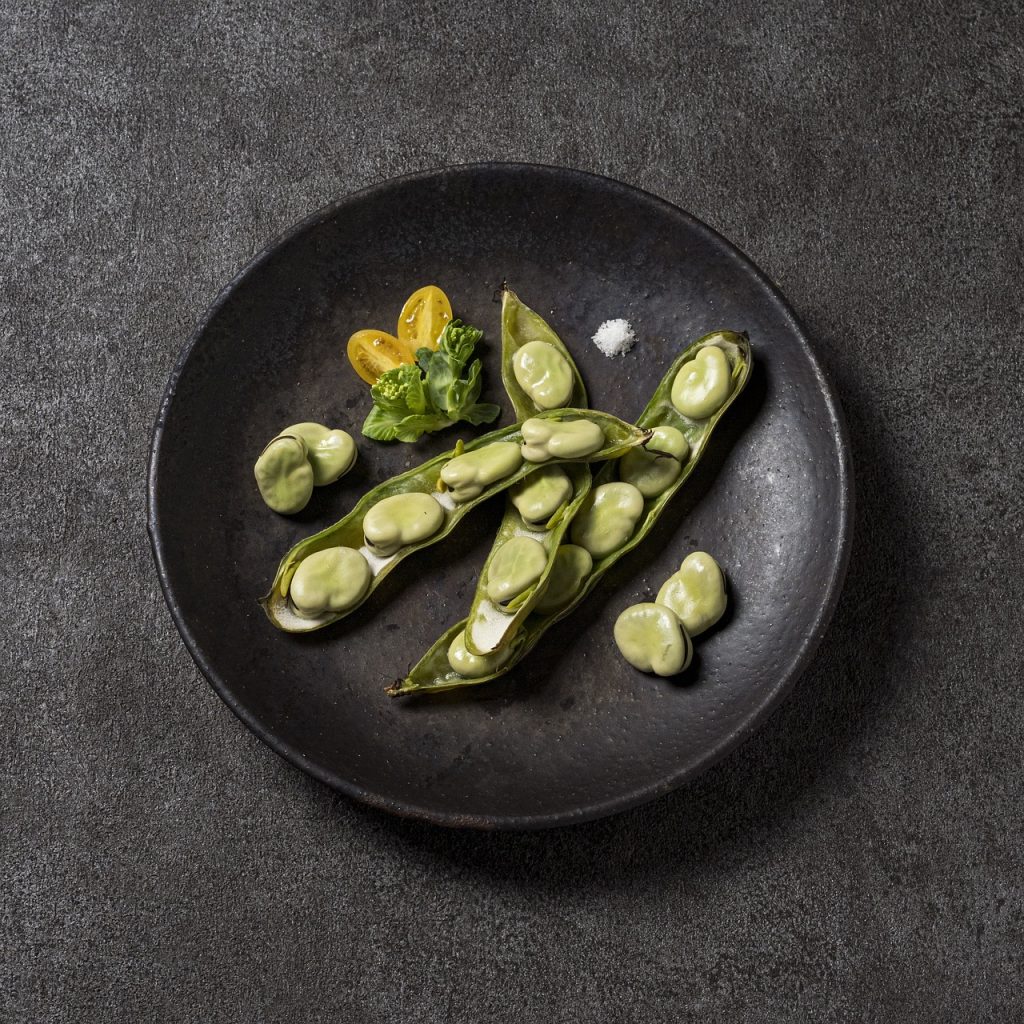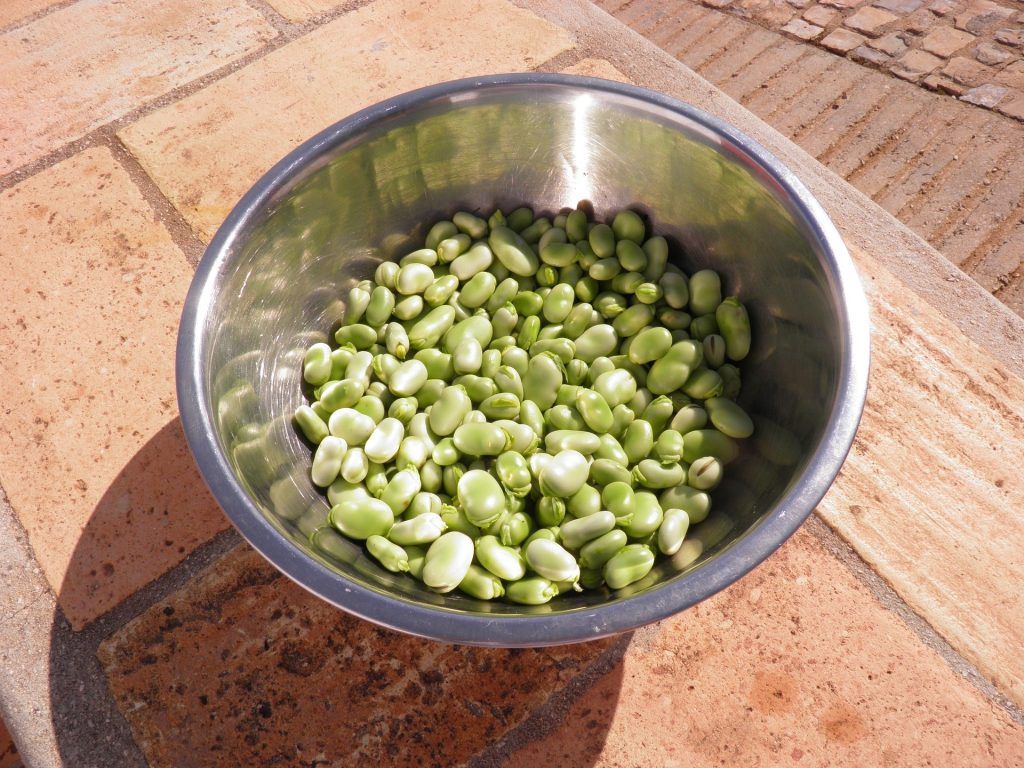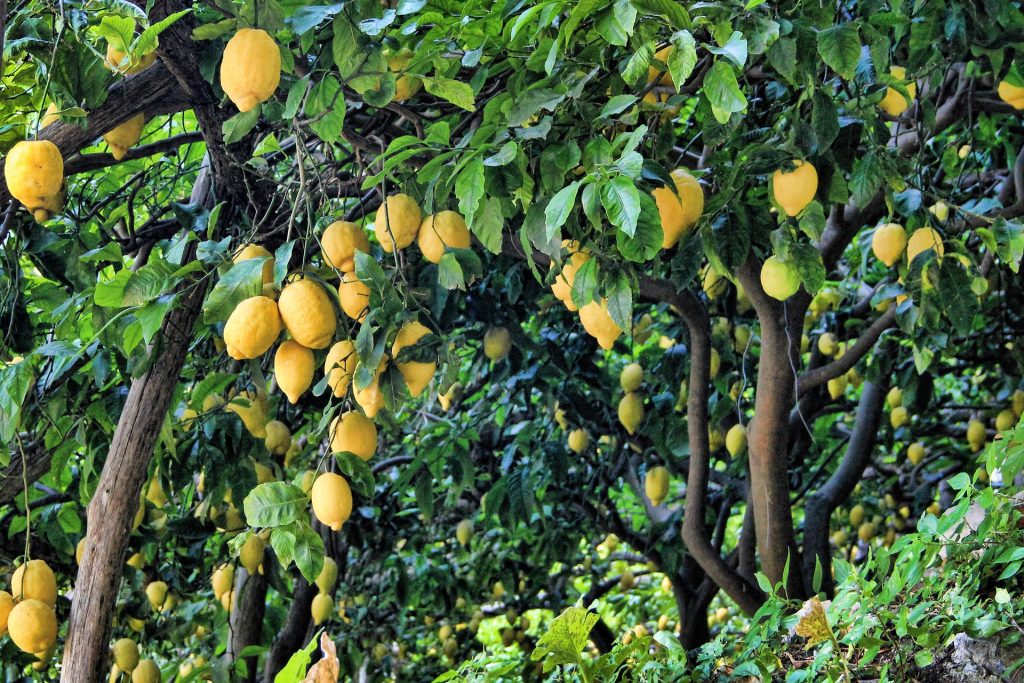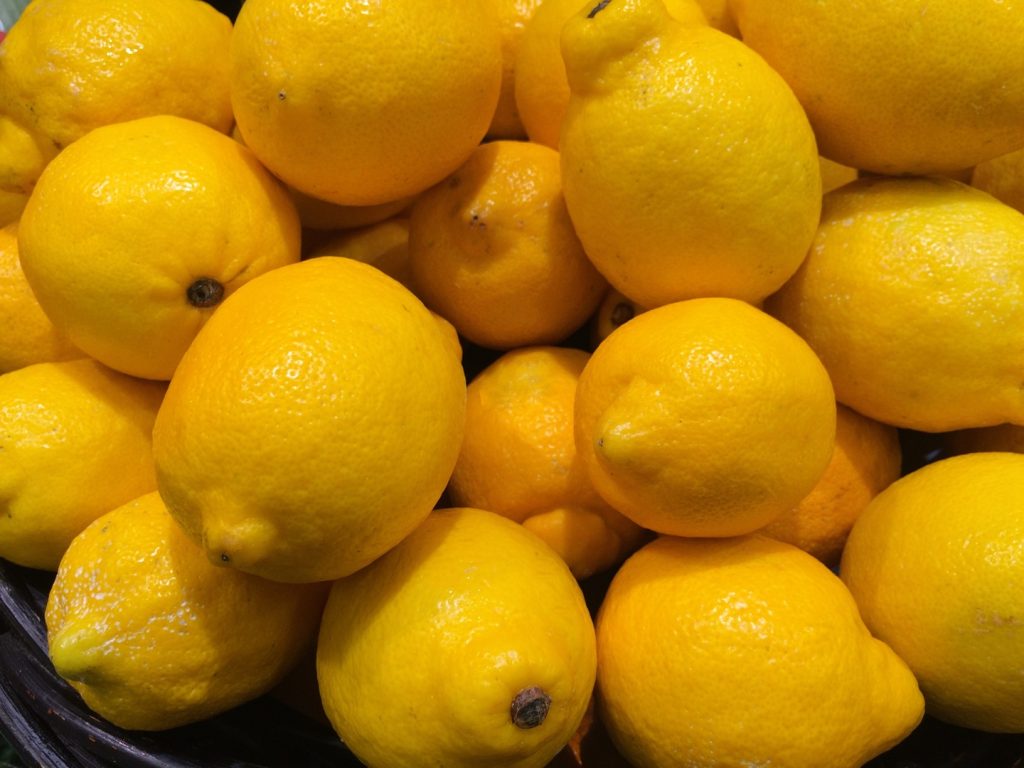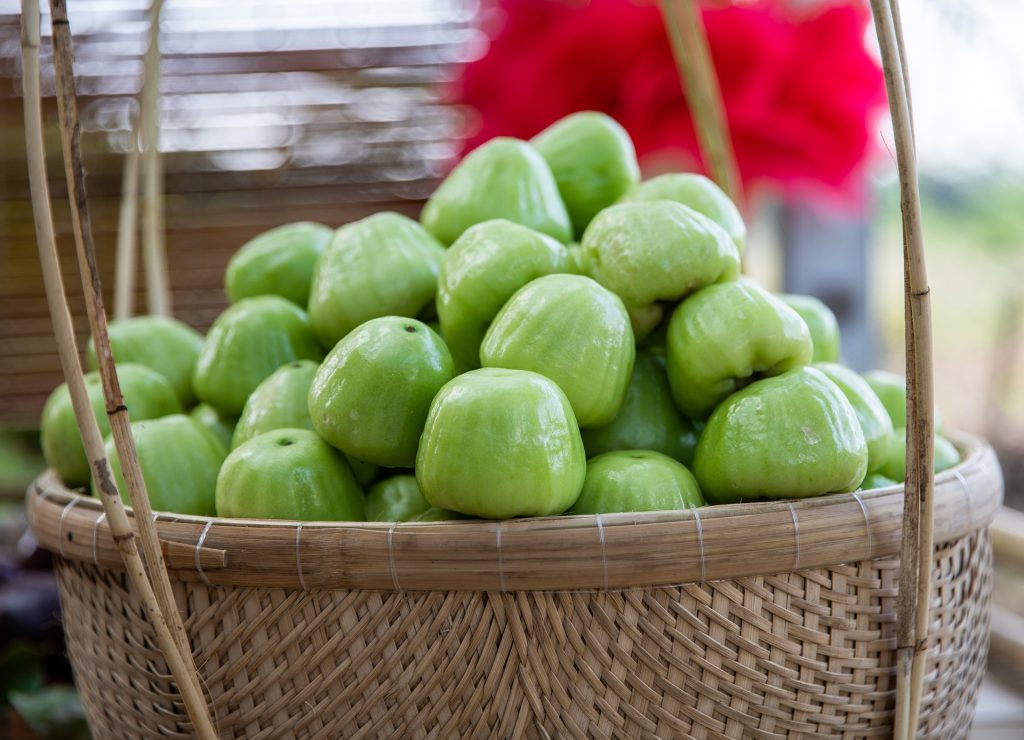Blog
Find articles that matter. From trading to shipping, trends to valuable goods, you can deep dive into everything you need.
Latest Posts
Blog
To survive in the international arena, businesses engaged in trade should always follow the trends. Knowing the trends means having a comprehensive knowledge of the market. Trends in trading can change from year to year. Therefore, it is crucial to stay up to date so as not to fall behind the times. 2022 will be a year in which new trends in trade will emerge. What will happen, especially in this period when the effects of COVID-19 begin to disappear?
COVID-19 profoundly affected the global business world. 2020 has been a difficult year for many businesses. Major changes in the supply chain and uncertain economic climate strained traders. However, in 2021, the business world learned to live in the world of the pandemic. They have managed to tackle the difficulties in the supply chain and the uncertain economy. Hence, the business world has now remained more flexible and adapted to changes. In addition, the pandemic reminded traders that they are working in an environment where uncertainties can occur.
The health crisis no longer affects the world economy much. Therefore, global trade is not under the influence of this crisis. There is still an imbalance between countries in imports and exports. But it is a fact that the global economy is growing. On the other hand, inflation problems arose in some countries. Still, developments so far point to an improvement.
Global trade has already achieved pre-pandemic levels. At the moment, geopolitical competition is increasing in many parts of the world. Therefore, it is significant for businesses to determine policy based on trends. International trade trends appear to normalize in 2022. Some factors will affect world trade. Here are what you need to be on the lookout for.
Economic Growth but Slower
World Trade Organization (WTO) made some predictions about the world merchandise trade volume. The WTO stated that the growth of this volume is at a level that could reach 4.7% in 2022. On the other hand, the Center for Economics and Business Research (CEBR) predicted it to be 4%.
It is already obvious that there will be economic progress. But like last year, this progress will vary depending on the region. Developed countries will gain at a higher rate compared to developing countries. Vaccine distribution, economic policies, and political factors are typically the causes.
There are downward revisions for economic growth forecasts for 2022. IMF changed its forecasts for this year. It lowered its economic growth forecast for 2022 from 4.9 to 4.4. Inflation in the USA and developments in China's real estate sector were the reasons for the decline. Thus, global trade trends will likely reflect these developments. As a result, this indicates a lower-than-anticipated growth.
Normalization in Supply Chains
The pandemic has posed major challenges for the supply chain. Especially logistics problems and energy prices led to a shortage of supply. It also led to an increase in shipping costs. Therefore, many suppliers have struggled to improve their reliability. Moreover, there is a diversification in terms of suppliers. These efforts seem to affect the business world in 2022. Gradual improvements in supply chain challenges appear to come through 2022.
Hybrid Methods in Logistics
Travel restrictions in the past years have reshaped some logistics strategies. Many companies are reviewing the methods they use. As a result, they are likely planning to adopt new hybrid approaches. In 2021, some supply chains began to operate more locally. Others, on the other hand, have made their chains wider and more diverse. Suppliers who do not want to experience losses with a single method may be considering a new method. The hybrid strategy, which is a mixture of methods, appears as a great possibility.
There are also changes in the manufacturing part. Manufacturers, acting with the just-in-case inventory method, started to adopt the same method in logistics. It'd be better to explain the just-in-case model here. In this model, manufacturers keep a large amount of inventory on hand. Because they want to avoid the lack of products in stock at the time of need. The same approach will likely appear in logistics. Some companies will probably retain offshore production facilities. At the same time, they may intensify the production of some goods in domestic markets.
Sensitivity to Climate Change

The global sensitivity to climate change has increased. The increase in this sensitivity in the world is naturally reflected in trade. Many companies are now embracing a more circular economy. Their aim is to reduce greenhouse gases and carbon emissions. We have seen the signals that these developments will take place in 2021. Especially the last COP26 summit was the footsteps of global climate sensitivity. The summit focused particularly on the use of coal. COP26 invited many countries to reduce the use of coal.
As a result, many countries have agreed to phase out coal use. Many international businesses have stepped up their efforts to reduce their carbon footprint. Therefore, we will start to see the effects of this decision on trade in 2022.
New Era in Trade Agreements
On the first day of 2022, there was a development that will facilitate trade between most of the East Asian and Pacific countries. The Regional Comprehensive Economic Partnership (RCEP) is an important agreement to facilitate trade. This move seems to increase trade significantly. This partnership could also change the direction of trade in non-member countries. As a result, trade may become more regional in that part of the world. Besides, this regionalization trend may occur in other areas of the world.
Major Advances in Cold Chain Technology
Again, we came to another area that took shape with the effect of the pandemic. Cold chain technology has undergone major changes, especially with vaccine distribution. Because vaccines need to stay at a specific temperature to not lose their effect. Therefore, the importance of cold chain technology has emerged once again. The emerging system for vaccines proved useful for other goods as well. A transition to a new stage has begun, especially in the transportation of food and medical products. Therefore, cold chain technology is advancing in these areas as well. This progress will continue in 2022.
Above, we talked about some trends that could happen in 2022. Of course, as every year, unexpected things can happen. The important thing here is to realize that knowledge is power. It's up to businesses to act in line with trends or vice versa. But being reliable and durable in international trade is essential for any business.
Turkish Goods knows the world in which it operates very well and takes its steps wisely. We never lag behind the times in supply chain and logistics, and we follow global trends very well. We owe our reliability and quality to our continuous improvement. If you are looking for a reliable partner in the market, you can click here to get information about our services.
With the arrival of the spring season, the weather gradually warms up. Colorful fruits begin to take their place in the fruit and vegetable sections of the markets. People want to consume especially juicy and refreshing fruits in the spring months. As one of the countries in the mid-rail, Turkey is a country rich in fruit diversity. Turkey exports fruit to many parts of the world, especially to Russia and Eastern European countries. So, what are the spring fruits you can import from Turkey?
What are the Characteristics of Fruits Consumed in the Spring?
The fact that humans consume food according to the seasons is a result of evolutionary adaptation to the environment. Just as we consume more energizing and fatty foods in winter, we tend to invigorate juicy fruits in spring. In this way, we keep our bodies in balance. In the spring season, we tend to eat fruits rich in antioxidants, low in sugar, and in green tones. So, what do you know about the spring fruits you can import from Turkey?
An Overview of Fruit Imports from Turkey
Turkey exported more than 1 billion dollars of fruit in total in 2021. Since it is a country suitable for growing fruit in 4 seasons of the year, export and import circulation in Turkey is carried out without any problems. Since fruit production exceeds the domestic demand, those who want to import fruit from Turkey do not encounter any quota restrictions. Especially in the last two years, despite the Covid-19, Turkey has managed to increase its export rate. For the year 2022, Turkey continues to support farmers and comply with international standards.
Which Fruits Can You Import from Turkey in Spring?
Although green-colored fruits predominate in the spring, fruits such as strawberries, green almonds, Japanese plums, and apples are also grown in the spring. Since the period from ripening to harvest is relatively long, you can consume these fruits throughout all spring months. Only the durability period of strawberries may be a little shorter than other fruits. You should consider these situations before importing.
Green Plum
Green plums are commonly grown in Turkey's western and southern areas. Turkey is the seventh-largest producer of plums in the world, with a total of 220.000 tons. You can import the green plum, whose production has increased in recent years and whose cultivation area has expanded, from Turkey. While European countries come to the fore in plum imports, Saudi Arabia also imports plums from Turkey.
Avocado
Although avocado is a tropical fruit, it grows in the southern parts of Turkey. Avocado will surpass bananas and mangoes as the most traded tropical fruit in the 2021-2030 timeframe, according to the OECD and FAO's Agricultural Outlook report. Avocado production in Turkey has increased significantly, especially in the last 10 years. In fact, Avocado production in Turkey in 2021 increased by 53% compared to the previous year. Most of the avocado production is done in Antalya, but Mersin and Adana provinces are increasing their production day by day.
Apples
Apple originating from West Asia is a fruit grown in Turkey. Spreading from western Asia to Europe, the apple has species that are resistant to temperatures down to -30 degrees Celcius. The main reason why apples are preferred so much is that they can be stored for a long time and consumed throughout the year. It also has a wide usage area such as jam, fruit juice, marmalade, vinegar, and dried fruit.
Green, red, and gala apples are the most planted species in Turkey. Turkey's annual apple production is more than 4.3 million tons and most of the production is done in Isparta. The countries that import the most apples from Turkey are Indonesia, Russia, and Iraq. Turkey will continue to be one of the world's leading countries in both apple production and apple export.
Strawberries
Strawberry has grown in the world and our country, especially in recent years. The most important factor in increasing the importance of strawberries is their economic growth in different climates and soil conditions. In addition, strawberries ripen in a short time in a market period when fresh fruit is scarce, and they meet the need. Moreover, it provides a continuous circulation.
Since greenhouse and open-grown strawberry varieties are different, you can import the varieties that suit your needs. Strawberry production in Turkey is mostly done in the Mediterranean, Aegean, and Marmara regions. On a provincial basis, the highest production is made in Muğla. Turkey doubled its export amount in 2021 compared to the previous year. The most exported countries were Russia, Romania, and Iraq.
Green Almond
The homeland of the green almond, which is from the Rosaceae family, is southwest Asia. It was first grown in Turkey and the Middle East countries and then spread to Europe and America from here. The green almond tree is similar to the peach tree, but it is taller and long-lived. You can choose the green almond with sweet and bitter fruits according to your needs. The usage area of the green almond is quite common:
- Consumed as nuts when dried.
- Consumable in raw form.
- Can be used as almond oil and flour.
- Used in the cosmetics and pharmaceutical industry.
It can grow even on stony and gravelly soils. It is a perennial and can grow anywhere except in extremely cold and humid areas. Since the market value of its fruit is quite high, you can give priority to your imports. Green almond grows on the Mediterranean and Aegean coasts in Turkey. Especially Datça peninsula stands out in production. Turkey is one of the world's leading almond producers and one of the top 10 countries.
Japanese Plum
The Japanese plum, which has been grown in Japan for more than a thousand years, came to Turkey via Algeria and the Mediterranean. Japanese plum, which is mostly grown in the Mediterranean region, is grown in small amounts in the Aegean and the eastern Black Sea regions. The Japanese plum, which is consumed as fresh and marmalade, is a very popular fruit in the Mediterranean countries.
Import Spring Fruits with Turkish Goods Privilege
Turkish Goods delivers the best quality fruits of Turkey to you in a fresh and safe way. It helps you in all processes from packaging to quality control. Turkish Goods contributes to your planning by providing the necessary information in all transportation processes. Contact us to start importing spring fruits from Turkey.
With the spring, the weather warms up, precipitation occurs, and as a result, there is an increase in agricultural product production. Many vegetables are grown in Turkey in the spring season when there are the most optimal conditions for plants to grow. Just like fruits, green leafy vegetables come to the fore in vegetables. These vegetables, which are rich in fiber, also come to the fore with their juicy and refreshing effects. Turkey is one of the leading countries in the world in vegetable production. It produces vegetables in the amount that it can export abroad after meeting the supply in the domestic market. So, what are the spring vegetables you can import from Turkey?
How was the Vegetable Production Season in Turkey in 2021?
The year 2021 was declared the "International Year of Vegetables and Fruits" by the United Nations, as the effects of the coronavirus began to ease. In this period, especially promoting fruit and vegetable production and ensuring food security gained great importance. Accordingly, Turkey became one of the countries that increased its fruit and vegetable production in 2021. So, how did Turkey's vegetable production progress in 2021, and how much income did Turkey earn?
In 2021, Turkey increased its vegetable exports by 25% and achieved a revenue of 875 million dollars and 713 thousand dollars. Total fruit and vegetable exports exceeded 3 billion dollars. According to the Turkish Statistical Institute (TUIK), vegetable production increased by 1.8% compared to the previous year. Total vegetable production reached 31.8 million tons. Again, according to TUIK data, the production of tuber and root vegetables increased by 6.9%. Dry onion production in this group increased by 9.6% and dried garlic production by 13.5%. Finally, the production of white cabbage, a leaf edible vegetable, also increased by 0.6%.
What are the Vegetables Produced in Spring in Turkey?
Consuming vegetables and fruits produced on time is more beneficial for people in terms of nutrition. Vegetable diversity, which increases with the spring months, also plays an important role in human nutrition. You can import vegetables from Turkey to reach vegetables produced with the right agricultural techniques. Turkey, as a country where many spring vegetables are grown, provides you with great convenience in this regard. The vegetables grown in spring in Turkey are fresh peas, broad beans, spinach, artichokes, lettuce, asparagus, carrots, and purslane.
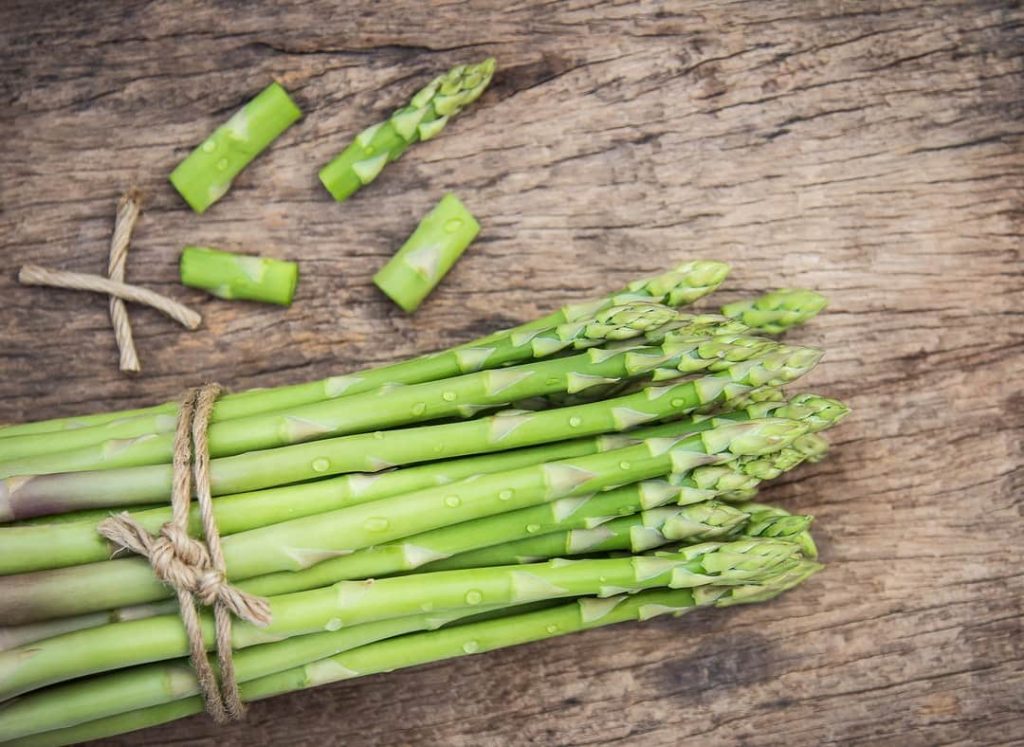
Fresh Peas
Fresh pea, which grows at an average temperature of 15-21 degrees, is a vegetable with a granular structure. Peas, which are consumed by boiling with other vegetables, are quite nutritious. An average of 107 tons of peas are produced annually in Turkey. The regions that stand out in pea production are Marmara, Mediterranean, and Aegean. It is more nutritious as it contains carbohydrates. Fresh peas are frequently used as a vegetable protein in vegan and vegetarian diets.
Fresh Broad Beans
Broad beans, which are often preferred by dieters, are rich in B vitamins, protein, and fiber. You can consume it raw as a salad, as well as boiled. The broad bean, whose homeland is southwest Asia and North Africa, grows mostly in the Aegean, Marmara, and Mediterranean regions of Turkey.
Spinach
Turkey is one of the most spinach-producing countries in the world. Today, it ranks 4th in the world with more than 200 thousand tons of spinach produced. Spinach, which is very beneficial for the body, is known as a superfood. Most of the spinach is grown in Izmir in Turkey. You can import spinach, which can be grown all over Turkey, from Turkey in the spring.
Artichokes
Artichoke, one of the main vegetables of the Mediterranean cuisine, grows in the Aegean and Mediterranean regions of Turkey. It is used in vegetable dishes, salads, and pizzas. It grows mostly in İzmir in Turkey. Turkey produces an average of 40 tons of artichokes annually.
Lettuce
Lettuce is high in fiber and contains vitamins A, B, C, D, and E. It is active in lettuce cultivation in Turkey, especially in the Aegean region. Turkey is among the top 10 lettuce producers in the world. With the increase in lettuce varieties produced in recent years, the market is growing. Lettuce is widely used in salads, sandwiches, and diet foods.
Asparagus
Asparagus, whose homeland is Central Asia, is a very beneficial vegetable for health. It is a vegetable suitable for diets due to its fibrous structure and containing folic acid. It is generally used in salads and meals. You can consume meat dishes with grilled asparagus. Asparagus, the production of which has increased every year in Turkey, is mostly grown in the Aegean region. The average lifespan of asparagus, which is a perennial plant, is 10-12 years. You can import delicious and nutritious asparagus from Turkey.
Carrots
Unlike green leafy vegetables, carrots are orange and rooted. Turkey, which produces more than 600 tons of carrots annually, is the 10th largest producer in the world. Konya produces more than half of the carrots in Turkey. Carrots produced in Turkey are mostly imported by European countries, Russia, and Arab countries. In addition to their health benefits, carrots have a wide range of uses. It is used in salads, fruit juice production, and the pastry industry.
Purslane
Purslane, which is grown almost everywhere in the Asian continent, is a low-calorie and nutritious vegetable. Being more than 90% water makes it an indispensable part of diet menus. Purslane, which is rich in omega 3 acids, shows the ability to grow even in cold climates. Turkey produces about 2000 tons of purslane annually.
Import Spring Vegetables with Turkish Goods Quality
With the Cold Chain Supply method, we deliver fresh vegetables to you wherever you are in the world. You can contact us to have the best quality vegetables which are produced in Turkey with the privilege of Turkish Goods. We provide you with the necessary technical support from the production process to the process of the vegetables reaching your tables. You can click here to reach the vegetables we grow every season of the year.
Containers are the most important tools in the shipping, trading, and transportation industries. These shipping containers are structures that house a range of items that need to be carried from one point to another using a variety of container ships of varying sorts and sizes.
Intermodal shipping containers now play a critical role in the flow of international trade. For example, they account for almost 90% of all marine cargo shipping. "Intermodal" standardized containers allow international shipping firms to carry cargo quickly between ports. They allow smooth transfers between tractor-trailer rigs, train vehicles, cargo aircraft, and marine vessels. They aid in the reduction of expenses associated with several delivery options.
Carriers don't spend valuable time and money unpacking and repacking a freight shipment to transfer it from a boat to a railroad line or a trucking route. They simply transfer the complete packed and secured shipping container. Some containers go through several transfers throughout the supply chain before arriving at their final destination. This short article tries to give useful information on the characteristics and specifications of these often utilized transportation assets.
Container Types & Dimensions
Shipping containers and storage containers can come in many sizes. 20ft and 40ft shipping containers are the most typical container lengths, and 8ft in width as usual. A container's height is typically 8ft 6" and a high cube will have an extra foot to reach 9ft 6".
In almost all circumstances, the sides of a container are corrugated. The depth of the corrugation is normally 1 inch (25mm), which means that the outward width measurement is reduced by 2 inches (50mm) (1 inch on each side). The rear (blank end) is likewise corrugated, and the doors are about 2 inches (50mm) thick, thus the length is reduced by around 3 inches (75mm).
Height is the most significant drop from exterior to inside dimensions. A normal container's floor has an underneath clearance of roughly 6 inches (150mm) and a thickness of 27mm (1.1 inches). As the roof is corrugated, a further 1 inch (25mm) is lost, resulting in an interior dimension that is approximately 8 inches shorter than the exterior – 7ft 10 inches (2.39m). However, this might vary somewhat depending on the floor thickness and building style utilized.
The door height is further lowered by the steel top rail above the door, which is part of the container's structural stability. It is usually 4 inches (10 cm) and decreases the entry height to 7ft 6ins (2.28m), but this can vary slightly either way.
Standard Dry Shipping Containers
Standard containers are the most frequent freight unit for marine transportation since they are durable and multipurpose. These are known as "dry" containers. When fully enclosed, they provide protection against weather conditions. The most frequent sizes are twenty-foot and forty-foot containers. These containers are intended for use on any mode of transportation, whether by water or land.
The ISO standard 6346 specifies the external dimensions, minimum interior container dimensions, and maximum weight (including cargo). However, the tare weight, actual internal container size, and other measurements will vary from model to model and manufacturer to manufacturer.
20-foot Shipping Container
A typical ISO container of 20 feet in length is the most common and is used by ships of all sorts, large and small. The dimensions of a 20-foot container are 6.06 m in length, 2.44 m in width, and 2.59 m in height.
It can transport up to 30,480 kg / 67200 lbs. for common purpose containers and up to 45,000 kg (99,207 lbs.) for flat racks. The payload capacity of a 20-foot refrigerated container is 27,400kg.
40-foot Shipping Container
A 40-foot container has double the volume of a 20-foot container and costs just 15 to 25% more. It creates the most cost-effective shipping container for commodities carried by ship. A 40-foot container has the following dimensions: 12.19 m in length, 2.44 m in width, and 2.59 m in height.
It can transport general-purpose containers with a maximum gross weight of 30,480 kg (67200lbs.) and flat racks with a maximum gross weight of 60,000 kg (123,276 lbs.). And refrigerated containers can carry a maximum gross weight of 35,000 kg (77,161 lbs.).
45-foot Shipping Container
45-foot containers have a slightly higher cubic-foot capacity than 40-foot containers. They provide extra space for the shipper. The dimensions of a 45-foot container are as follows: 13.71 m length, 2.44 m width, and 2.59 m height. The cargo capacity of a 45-foot container is about identical to that of a 40-foot container.
The above specs are examples of widely used containers. The ISO containers' specific container dimensions and capacity may vary based on the manufacturer, the age of the container, and the container owner. Other shipping container sizes available on the market are 8 ft, 10 ft, 53 ft, and 60 ft, which are typically utilized for road and rail transportation.
Many organizations shipping abroad use only this type of container, however, depending on the nature of your goods, you may wish to explore the following freight container types.
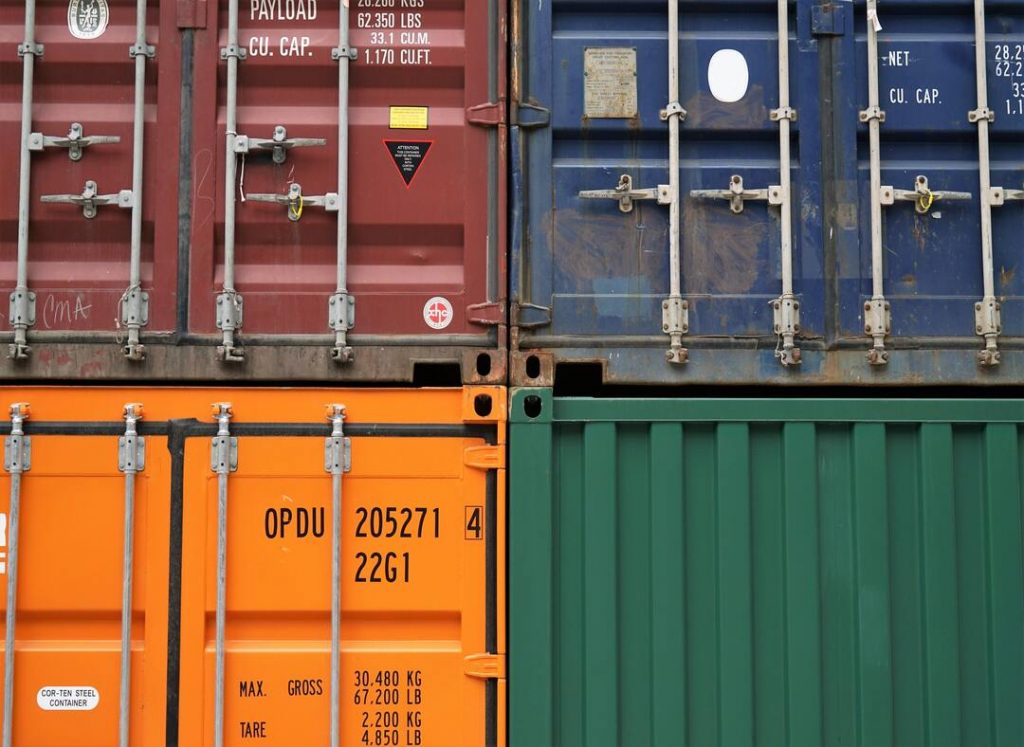
High Cube Container
A high cube is almost equivalent to a conventional dry container, except it is about a foot higher and hence has additional storage space. A full container load in a high cube container may accommodate up to 76 cubic meters of freight, compared to 67 cubic meters in a normal container.
A high cube container has the following dimensions:
- Length - either 20'6" (6.25m) or 21'4" (6.50m)
- Width - either 8'0" (2.44m) or 8'6" (2.59m)
- Internal height - either 9'3"(2.82m), 10'0"(3.05m), or 11'5"(3.48m).
Outside dimensions would be the same as any other container. However, all high cubes are 6 inches higher than ordinary ISO shipping containers to allow for additional room within. Therefore an extra 6 inches of height equals 19% more cubic area inside.
Flat Rack Freight Containers
A flat rack freight container is a broad, horizontal metal structure that is attached to a ship's deck using detachable steel locks. They are used to move big and heavy items. It only includes walls or support posts on the ends, allowing freight to be loaded from the top and/or sides. They usually come in three sizes: 20ft (6m), 40ft (12m), and 53ft (16m). The base width is 8 ft (2.4m), and the depth can range from 5 ft (1.5m) to 7 ft (2.1m).
However, most of the time, you won't have to bother about choosing containers for your shipments. You may leave it to your freight forwarder or international shipping company to find an ideal solution. It is, of course, as long as they know what sort of items you want to transport, the weight, dimensions, and volumes of those goods, and any unique needs such as temperature control, insulation, or ventilation.
Pasta is a very nutritious food product that is made by mixing semolina made from hard durum wheat with other ingredients, shaping, and drying. It has a lot of demand in international trade because it is very healthy. The demand for pasta has been growing steadily over the years. The ability to store pasta for a long time, eat it with different types of shapes, and make it quickly and easily is thought to be a big factor in this rise in popularity. Some countries have become exporters, and others have become importers. It is because pasta is made from durum wheat, which is grown in certain parts of the world.
History of Pasta
It is thought that pasta, which is made from wheat, was first used in China in the 1700s BC. In 1292, Marco Polo brought pasta to Italy, which is thought to be the birthplace of pasta. Italy made pasta very quickly, and it was soon made all over Europe, too. In 1789, Italians moved to the United States. They brought pasta with them, and pasta soon became a part of the United States. Italy, which makes the most pasta in the world today, made pasta in places where the climate was suitable. With the rise of technology, this dependence on the weather has changed.
Rise of Pasta
During the Second World War, pasta factories started to be built in countries where Italians lived. This led to pasta being known in many other countries. In 1933, Mario and Guisseppe Braibanti came up with automatic continuous pasta plants. This made pasta making an industrial process for the first time. In this list, we have gathered the leading pasta exporters in the world.
The Leading Countries in Pasta Export
Italy
Pasta has always had a worldwide flavor because its origins aren't just from Italy, which makes sense because it can be made with wheat and water. Some historians think pasta came from Italy, but most think Marco Polo brought it back from his trip to China, where he saw a lot of things. In the east, rice flour was used to make the first pasta, which was a big hit. The pasta was made from hard wheat and made into long strands in Italy.
Italy's Export Numbers
With pasta, Italy came out on top, making $3.6 billion. It is the world's top exporter of pasta. Italy sold $3.02 billion worth of pasta in 2019. It was also Italy's 34th most popular export in the same year. Italy exports pasta to Germany ($453 million), France ($428 million), the US ($391 million), the UK ($376 million), and Spain ($135 million). Italy is the country that sells the most pasta to other countries.
China
The Chinese sold $980.2 million worth of pasta in 2021. When China sold pasta in 2019, it sold 929.87 million dollars’ worth, which is up 0.70% from 923.43 million dollars’ worth in 2018. This makes China the second-largest pasta-selling country in the world. Between 2017 and 2018, the value of China's pasta went up by 6.675% each year. It was the 374th most popular thing that China sold to other countries in the same year. It costs China $177 million to send pasta to Hong Kong. Moreover, The United States, South Korea, Japan, and Canada are the top five countries where pasta is sold. China's pasta exports to Canada, the United Kingdom, and Russia grew the most from 2018 to 2019, with each market adding $11.6 million, $6 million, and $4.62 million.

South Korea
Third place goes to South Korea. They make $792.3 million a year by selling pasta. Because it sells pasta all over the world, it is a very important industry. Over 792.26 million dollars of pasta from South Korea will be exported in 2020, up from about 290 million dollars in 2011. This is a big change. Pasta exports grew by 18.41% between 2017 and 2019. In 2019, South Korea earned $612.14 million in 2019.
South Korea’s Export Numbers
South Korea sold 612.14 million dollars of pasta to other countries, an increase of 10.10 percent from the 555.994 million dollars sold in 2018. Between 2017 and 2018, the value of South Korean pasta went up by 8.067%. There was a big change in the amount of South Korean pasta that was exported each year between 2017 and 2019. This was 18.41%, compared to 12.933% between 2018 and 2019. In 2019, South Korea had a 1.5% share of the world's total pasta exports. In terms of pasta exports, the country is ranked ninth in the world.
Turkey
In 2021, Turkey exported pasta worth $761.3 million, which put it in fourth place in the world market for pasta. Each of the 24 companies that make pasta in Turkey makes about $1 billion a year. Turkey has a big impact on the domestic pasta industry, which is growing quickly. In fact, it makes and sells a lot of pasta. Despite trade quotas set by EU members, Turkey came in second behind Italy in exports. Pasta, which has become popular outside the home, has become more popular at home in recent years. In 2010, Turkey made 606 tons of pasta and had a 5% share of the world's pasta production.
Turkey’s Export Numbers
In 2013, Turkey made 1 million tons of pasta and had a 7% share of the world's pasta production, which is a big increase. While Italy, the United States, and Turkey keep making pasta for export, the rest of the world only makes pasta for home use. Turkey sells 20,000 tons of goods to European Union countries each year. The amount of goods that Italian companies can sell in Europe is limited to 20 tons. When sales to the European Union aren't taken into account, Turkey ranks first in pasta export.
Import Pasta from the Best: Turkish Goods
When someone or a company wants to bring a product from another country, they do a lot of research quickly. When it comes to import, trust and quality are both very important. Turkish Goods helps bring together the valuable products of Turkey with the people who want to buy them around the world. With its experts in quality control and price offer systems, it is the best. To import quality pasta in different forms from Turkey, click here and get the best price offer in 48 hours.
Due to its geopolitical position, Turkey is a country that can trade with every region of the world. Turkey, which is suitable for land, sea, and air transportation, has increased the number of countries it exports to recently. Especially with the export of products with high added value, Turkey expanded its exports to every region of the world. This way, from South America and Middle East countries to Europe and the USA, Turkey increased its exportation.
The coronavirus, which has affected the world in recent years, has started to turn from a pandemic to an endemic. Therefore, Turkey has increased its exports significantly, especially in 2021. So, which are the countries to which Turkey exports the most, and what are the trade relations with these countries?
To Which Countries Has Turkey Exported the Most in Recent Years?
When we look at Turkey's export data, a regular increase in recent years is striking. Turkey's exports reached 225 billion 291 million dollars in 2021 with an increase of 32.8% compared to the previous year. In addition, while the ratio of exports to imports was 77.3% in 2020, it increased to 83% last year.
When we take a glance at the general export rate among countries, Germany takes the first place. Exports to Germany amounted to 19 billion 321 million dollars. Germany was followed by the USA with 14 billion 722 million dollars. The United Kingdom ranked third with 13 billion 704 million dollars. Italy followed the United Kingdom with 11 billion 475 million dollars and Iraq with 11 billion 133 million dollars, respectively. Exports to the first five countries corresponded to 31.2 percent of Turkey's total exports. Turkey has been exporting a significant amount to Israel and Egypt, which are among the Eastern Mediterranean countries recently.
Germany
Turkey's strong historical ties with Germany, the fact that millions of Turks live in Germany, and the largest economy in Europe make Germany a privileged country in exports. Since the 1960s, when intensive economic relations began, Turkey's trade with Germany has grown continuously. To put it in numbers, although the exports, which were 16.6 billion dollars in 2019, decreased to 16 billion dollars in 2020 with the pandemic. However, it reached approximately 18 billion dollars in 2021.
Turkey's exports to Germany in 2021 reached a historical peak of 17 billion 705.4 million dollars with an annual increase of 22.9 percent. The trade volume between Germany and Turkey also rose to a record level with an annual 41.1 billion dollars. So, in which sectors did Turkey export the most? The sectors that Turkey has exported the most to Germany in recent years are heavy industry sectors. Turkey exports to Germany mostly in the automotive, textile, iron and metals, chemical products, and electronic products sectors. In particular, Turkey's investments in the automotive and machinery industry, and improved logistics services have increased exports of value-added products.
The USA
Turkey's economic relations with the USA have increased especially since the 1950s. Turkey's mechanization in agriculture has started agricultural trade between the two countries. Today, trade with the USA is carried out in agriculture, automotive, steel, jewelry, textiles, and other fields. The country with the highest increase in exports in 2021 compared to the previous year was the USA. Turkey's exports to the USA increased by $4.54 billion in 2021. In 2021, total exports amounted to 14 billion dollars. Especially in recent years, agricultural, ship, and yacht products and automotive exports from Turkey to the USA have been increasing.
The United Kingdom
According to the data of the Ministry of Commerce, the United Kingdom has been one of the three countries to which Turkey has exported the most for the last three years. Exports, which were 11 billion 279 million dollars in 2019, reached 11 billion 236 million dollars in 2020 and 13 billion 708 million dollars in 2021. Turkey's exports to the United Kingdom constitute 6.1 percent of its total exports.
The sector to which Turkey exports the most to the UK is automotive. In addition, ready-made clothing, electronic products, precious stones, and jewelry sectors are the sectors that export the most. Especially the UK's exit from the European Union and its orientation to the Eurasian market contributed positively to Turkey's exports.
Italy
The trade between Italy, which has an important position between European and Mediterranean countries, with Turkey is increasing every year. Exports of 8 billion 83 million dollars in 2020 gained momentum in 2021 and reached 11 billion 480 billion dollars. Italy is the fourth country to which Turkey exports the most in 2021. The sector to which Turkey exports the most to Italy is the automotive sector. Other products from the automotive sector include nuts, iron and steel products, mineral oils, and textiles. Turkey's exports to Italy constitute approximately 5.1% of its overall exports. In this process, the companies operating in Istanbul made the most exports to Italy.
Israel and Egypt
Apart from Europe and the USA, Turkey also takes an active role in regional trade. Especially, there is a serious export rate from Eastern Mediterranean countries to Israel and Egypt. While Turkey exported 4 billion 704 million dollars to Israel in 2020, this figure increased to 6 billion 360 million dollars in 2021. Israel's share in Turkey's total export rate was 2.8%. The most exported sectors from Turkey to Israel are automotive, textile, construction materials, metals, and electronic products.
Egypt is one of the most populated Muslim countries. Relations with Egypt are of great importance due to its strong historical ties with Turkey. Moreover, Egypt is an important transit point in the Mediterranean. Therefore, with the development of bilateral relations with Egypt, there was an increase in exports. While Turkey's exports to Egypt were 3 billion 136 million dollars in 2020, this figure increased to 4 billion 523 million dollars in 2021. The sectors that Turkey exports the most to Egypt are textiles, iron and steel, various metal products, and road vehicles.
Reach Every Region of the World with Turkish Goods
As Turkish Goods, we bring you the best quality products of Turkey and the world. We provide agricultural and food products, textile, medical equipment, electrical products, toys, and more. Turkish Goods offers you the best price within 48 hours, allowing you to get ahead in the market. With its high product range, Turkish Goods follows all logistics processes and delivers the products to you. For detailed information, you can review our services.

